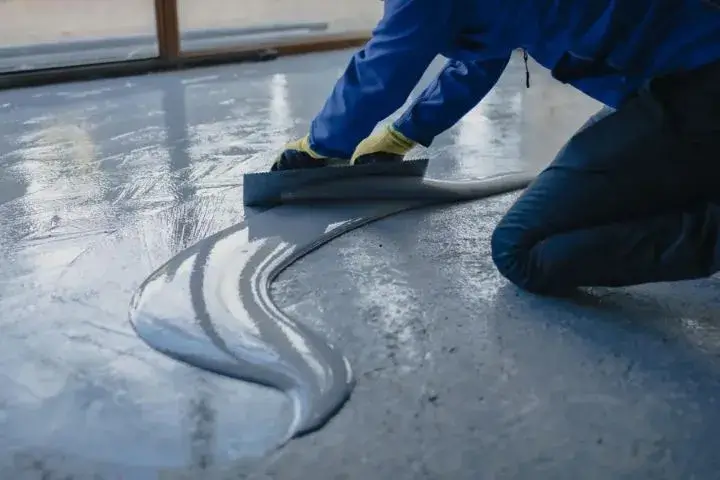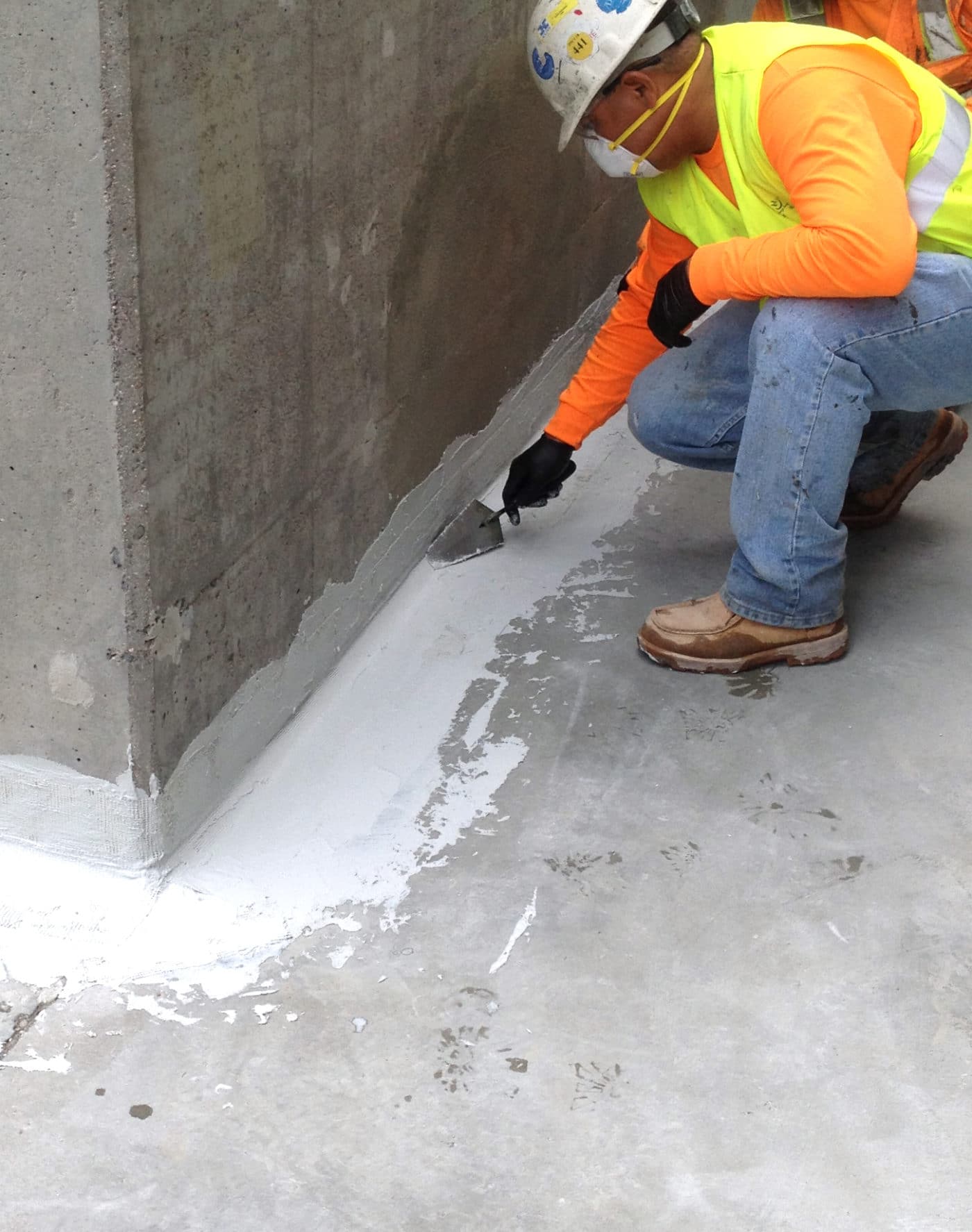What Makes Water Solutions Omaha a Reliable Option for Homeowners
Wiki Article
Exactly How Waterproofing Works: An In-depth Check Out Techniques and Technologies
Waterproofing is crucial for shielding frameworks from moisture-related damage. It includes different strategies and technologies that produce obstacles versus water intrusion. Typical techniques, such as compacted clay, exist together with modern-day developments like liquid-applied membranes. Comprehending the nuances of these strategies is vital for reliable application. Nonetheless, the effectiveness of any waterproofing solution pivots not just on the methods used however likewise on recurring upkeep and examination. What are the vital elements that influence long-lasting efficiency?Comprehending the Fundamentals of Waterproofing
Waterproofing is a necessary procedure that secures structures from water intrusion, which can lead to substantial damage gradually. This approach involves the application of various products and strategies created to develop a barrier against wetness. The main goal is to avoid water from permeating surface areas, which can cause deterioration, mold development, and structural instability.Various factors influence the choice of waterproofing method, consisting of the sort of framework, its area, and environmental conditions. Recognizing the physics of water motion and the properties of different products is important in picking a reliable waterproofing solution.Effective waterproofing not only safeguards structures however also boosts their longevity and honesty. Typically, it is incorporated into the design phase of construction to assure complete defense. As recognition of water-related issues expands, the value of understanding waterproofing basics becomes increasingly clear to engineers, builders, and residential or commercial property owners alike.Typical Waterproofing Methods
Traditional waterproofing approaches have been utilized for centuries, depending on tried and true techniques and materials to guard frameworks from water damage. Among the earliest techniques includes using clay, which, when compacted, develops a natural barrier versus moisture. In addition, bitumen, a sticky, black material originated from petroleum, has been employed for its waterproof residential or commercial properties, often put on roofs and foundations.Another strategy includes the application of lime-based plasters, which supply a breathable layer that enables moisture to escape while stopping water ingress. Thatch roofing, a typical technique still seen in some societies, provides excellent waterproofing due to its firmly loaded straw layers.Moreover, the use of rock and block has been prominent, as these materials are naturally immune to water when appropriately installed. On the whole, conventional waterproofing techniques highlight the significance of choosing ideal products and construction methods to enhance longevity versus water intrusion.Modern Waterproofing Technologies
Developments in modern-day waterproofing technologies have actually transformed the method frameworks are shielded from water damage. Ingenious approaches such as liquid-applied membranes and sophisticated sealers have improved the efficiency and convenience of waterproofing services. These technologies allow for seamless application, minimizing the danger of leakages and making certain thorough insurance coverage over intricate surfaces.Moreover, the assimilation of wise technologies, such as moisture sensors and automated monitoring systems, makes it possible for real-time analysis of waterproofing performance. This aggressive technique promotes prompt upkeep and decreases lasting repair costs.Additionally, improvements in spray-applied finishes provide fast application and superb bond, adapting to different substrates while providing robust security. Techniques like polymer-modified systems even more enhance flexibility and toughness, making them appropriate for varied atmospheres. In general, modern waterproofing technologies not only reduce water invasion however also add to the longevity and sustainability of structures, marking a considerable shift in the market.Materials Made Use Of in Waterproofing
The effectiveness of waterproofing solutions heavily relies upon the materials utilized in their application. Different materials are utilized to create obstacles against water access, each with unique properties matched for various atmospheres. Commonly made use of products consist of membrane layers, finishings, and sealants.Liquid-applied membrane layers, often made from polyurethane or acrylic, form a seamless obstacle that adjusts to complicated surface areas. Sheet membranes, generally created from rubber or thermoplastic, offer durability and are suitable for bigger areas. In addition, cementitious waterproofing materials, composed of cementitious compounds, offer superb attachment and flexibility.Sealants made from silicone or polyurethane are necessary for joints and joints, ensuring thorough protection. Advanced materials, such as geo-composite membranes, integrate numerous functions, improving efficiency. In general, the option of waterproofing materials is crucial in accomplishing resilient and efficient water resistance, tailored to specific project demands and environmental problems.
Typical Applications of Waterproofing
Waterproofing plays a vital role in different sectors, making certain the durability and integrity of frameworks. Common applications consist of residential remedies that shield homes, commercial infrastructure that safeguards businesses, and commercial settings that require robust protection against dampness. Comprehending these applications highlights the relevance of waterproofing in keeping both safety and security and capability across different settings.Residential Waterproofing Solutions
Lots of home owners deal with obstacles with dampness intrusion, making effective domestic waterproofing remedies essential. Numerous approaches exist to address this issue, consisting of exterior and interior waterproofing systems. Inside options frequently entail the application of sealants and layers to cellar walls, which aid protect against water seepage. Outside methods usually include the setup of drainage systems and waterproof membrane layers that divert water away more info here from the foundation.Additionally, property owners might consider sump pumps to get rid of water buildup and dehumidifiers to regulate humidity levels. Correct grading and the usage of gutters additionally play a vital function in handling water flow around the home. By executing these methods, house owners can considerably decrease the risk of water damage and mold and mildew growth, ensuring a completely dry and risk-free living environment.
Business Facilities Security
Reliable waterproofing solutions play a crucial duty in the protection of commercial infrastructure. Drainage & waterproofing company Omaha. These strategies are necessary for safeguarding structures, auto parking structures, and bridges from water damage, which can endanger architectural honesty and cause expensive repairs. Common applications consist of the installment of membranes, finishings, and sealants that produce obstacles against moisture infiltration. Areas such as basements, roofing systems, and exterior walls are typically prioritized to guarantee long life and durability. Additionally, waterproofing systems can enhance energy effectiveness by protecting against water-related concerns that may lead to mold growth and deterioration. By carrying out robust waterproofing procedures, homeowner can protect their investments and maintain operational efficiency, inevitably contributing to the general sustainability of business centersIndustrial Applications Overview
While numerous industries face special challenges, the requirement for trustworthy waterproofing solutions remains a consistent in commercial applications. Industries such as production, building, and power commonly encounter settings where moisture direct exposure can jeopardize structural honesty and functional performance. In producing facilities, waterproofing is essential for shielding machinery and materials from water damage. In construction, it safeguards foundations and cellars versus groundwater infiltration. The energy sector relies upon waterproofing for the protection of devices in hydroelectric plants and offshore structures. Additionally, food handling sectors make use of waterproofing to ensure hygiene and conformity with security criteria. On the whole, reliable waterproofing solutions are crucial for enhancing longevity, safety and security, and performance across various industrial setups.
Maintenance and Long Life of Waterproofing Solutions
Waterproofing services are designed to offer long-term protection against moisture intrusion, routine maintenance is essential to ensure their efficiency and longevity. Regular assessments play a considerable function in recognizing possible problems such as cracks, peeling off, or signs of water damage. Addressing click for source these problems quickly can prevent additional degeneration and expensive repairs.Additionally, cleansing the surface area of waterproof areas assists remove dust and particles that can compromise the honesty of the waterproofing obstacle. It's also suggested to reapply safety coverings or sealers as recommended by makers to maintain perfect performance. Ecological variables, such as UV direct exposure and severe climate conditions, can impact the lifespan of waterproofing products, making regular evaluation vitalOften Asked Questions
Can Waterproofing Be Applied in Cold Weather?
The question of applying waterproofing in chilly weather raises problems about bond and curing. Several products might not do at their best in low temperatures, requiring cautious choice and factor to consider of certain standards for efficient application.How Much Time Does Waterproofing Typically Last?
The duration of waterproofing effectiveness differs based upon products and ecological aspects. Normally, it can last from five to 10 years, yet regular upkeep and inspections are vital to guarantee peak performance and longevity.Is Do It Yourself Waterproofing Effective and Safe?
The efficiency and security of DIY waterproofing rely on numerous variables, consisting of material high quality and application technique. While some people attain satisfactory outcomes, others may encounter concerns that jeopardize long-term defense and architectural integrity.exterior waterproofing
What Are the Signs of Failing Waterproofing?
Indicators of failing waterproofing consist of visible water stains, peeling off paint, mold development, mildewy odors, and wetness in walls or ceilings - Landscape drainage Omaha. These indicators suggest endangered barriers, demanding punctual inspection and prospective removal to avoid further damagesExactly how Do I Pick the Right Waterproofing Specialist?

Report this wiki page